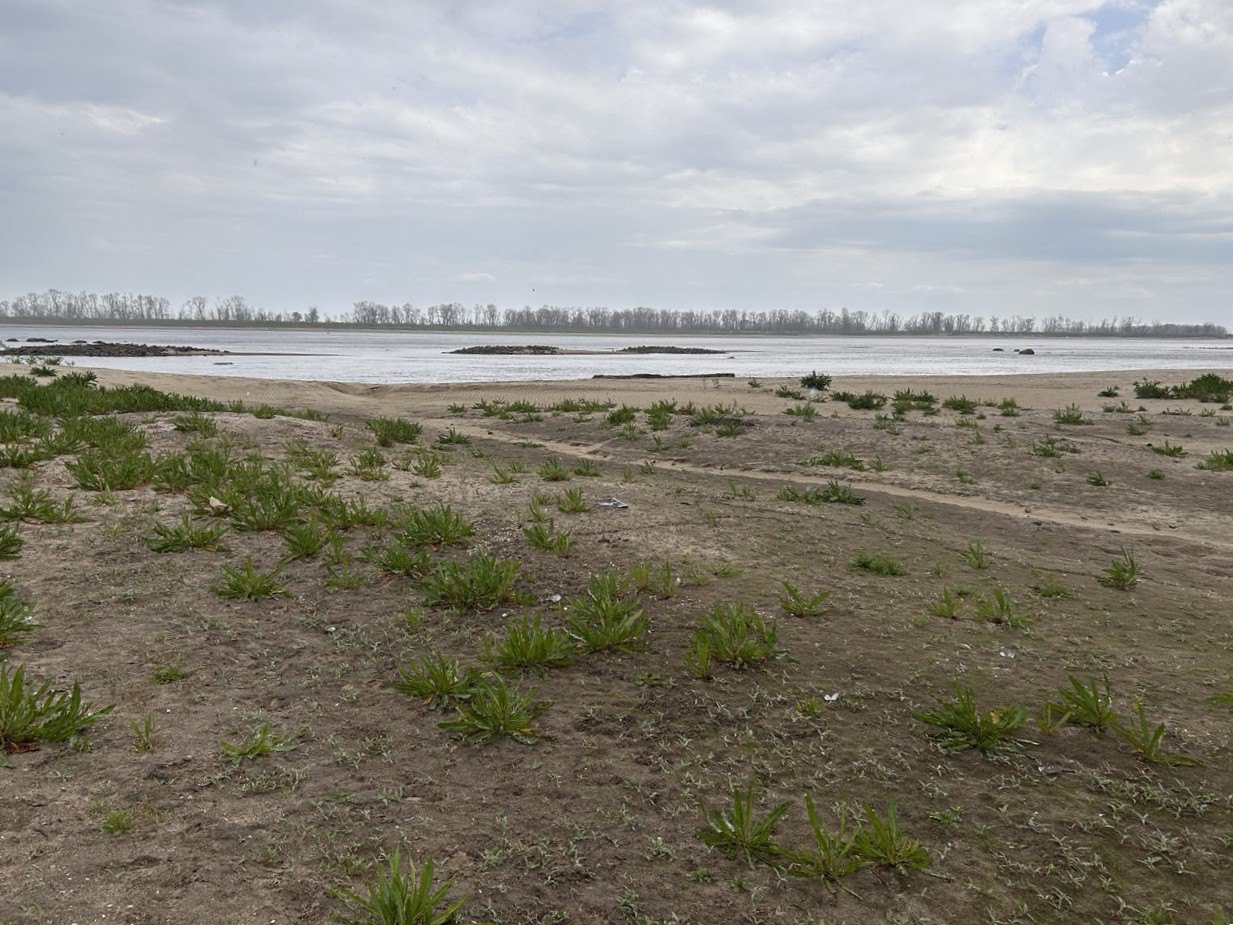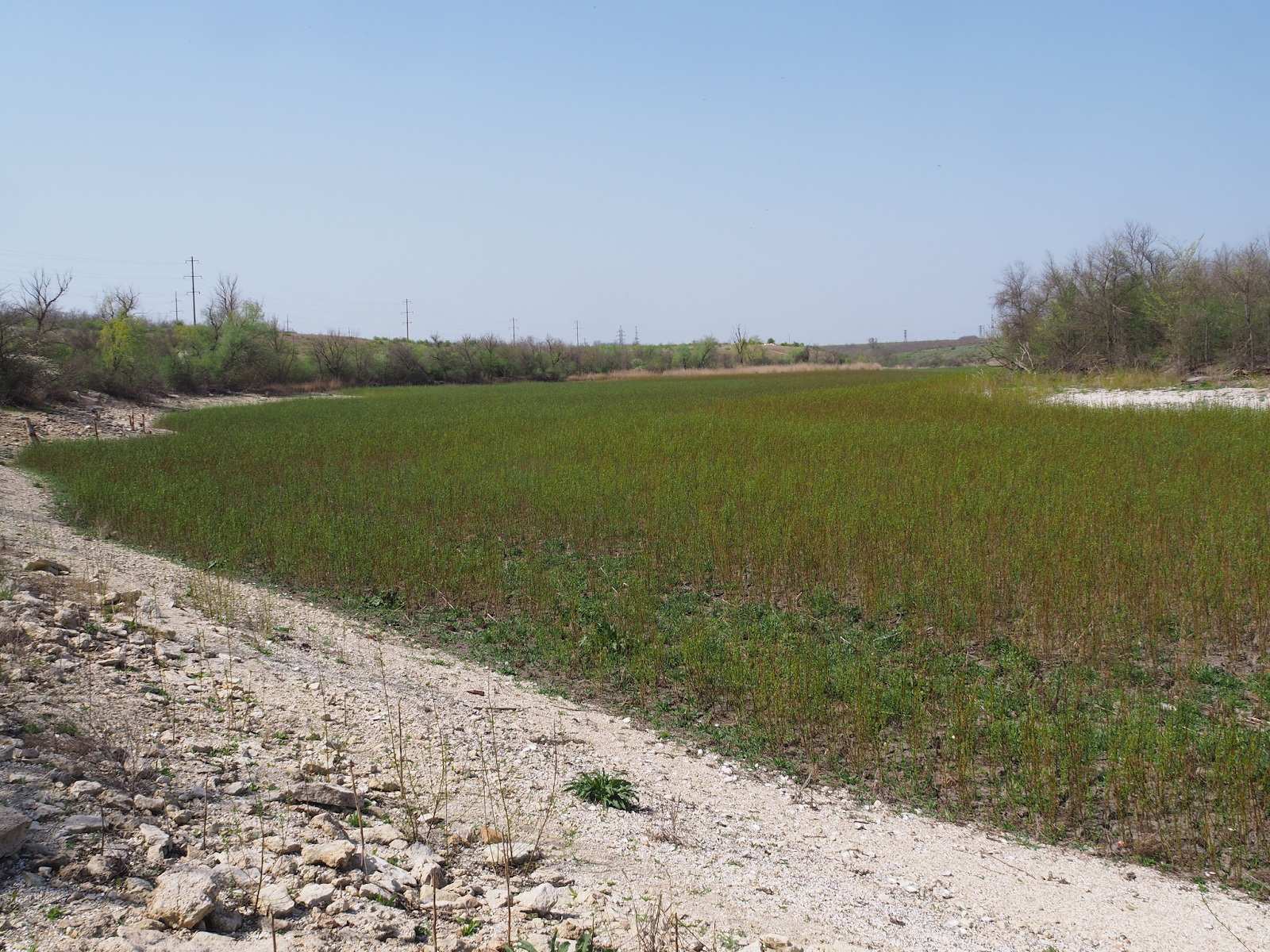UWEC Work Group position:
On June 6, 2023, Russian troops blew up the Kakhovka hydropower plant dam, and event that resulted in the complete destruction of its hydraulic structure and emptied the Kakhovka reservoir. The human-caused enormous flood moved over 14 km³ of water and is the largest environmental disaster in Europe since Chornobyl. Bottom and near-bottom ecosystems were destroyed, water supply and irrigation in southern Ukraine were disrupted, hydroelectric infrastructure hobbled, and a catastrophic flood on the Lower Dnipro River took over 100 lives. More than 40 protected areas, including sections of the Emerald Network and Ramsar sites, were damaged. The disaster was also felt in the Black Sea: desalination, siltation and eutrophication affected over 32,000 km² of water.
UWEC Work Group has been monitoring and publishing timely information related to the Kakhovka disaster since day one. We have reached a clear position on a desirable future and the former reservoir’s role in that future.
Nature has begun to recover rapidly on the site of the former reservoir. In 2023–2024, the reservoir bottom became spontaneously overgrown with typical Dnipro floodplain tree species and wetland vegetation. As many as 40 billion tree seeds have sprouted, which could lead to the formation of the largest floodplain forest in Ukraine’s steppe zone. The total potential area of forest exceeds 1,000 km², and carbon sequestration could potentially store 120 million tons of CO₂.
For the first time in 70 years, fragments of natural biotopes at the historic Velyky Luh (“Great Meadow”) area — floodplain forests, swamps and meadows destroyed by the construction of the reservoir in the 1950s — have begun to recover. The return of these ecosystems is important for biodiversity, climate change adaptation, flow regulation, reduced water loss and maintaining the health of river ecosystems. Typical representatives of regional native fauna are returning to the section of the river freed from the dam and reservoir. For example, as early as May 2024, Danube sturgeon (Acipenser gueldenstaedtii) — a species recognized as endangered by the International Union for Conservation of Nature (IUCN) — arrived at spawning grounds near Khortytsia Island. The recovering landscapes include the most important part of the Zaporyzhzhian Sich, where Ukrainian identity and statehood were formed.
A number of Ukraine’s scientific institutions (National Academy of Sciences of Ukraine, Kherson State University, Askania-Nova Biosphere Reserve) established 12 long-term monitoring sites to facilitate research on the positive dynamics of vegetation restoration and formation of characteristic floodplain plant communities.
However, despite the significant potential for restoring the Lower Dnipro River’s natural ecosystem, there is as yet no approved national strategy for use of the territory of the former reservoir. Conflicting scenarios are under discussion: reconstruction of the hydropower complex, construction of a new dam with subsequent floodplain drainage to serve the agricultural sector, creation of energy plantations of fast-growing trees, or support for the floodplain’s natural restoration.
Current needs:
- Develop a national strategy to restore Lower Dnipro River ecosystems, which include:
- Conservation and legal status for restored watershed ecosystems
- Evaluation of ecosystem services (including carbon storage)
- Plan for the sustainable management of new protected areas
- Implement a moratorium on any engineering interventions in the floodplain until the completion of environmental and socioeconomic evaluations. Specifically, suspend implementation of plans to rebuild the Kakhovka hydropower plant or construction of dams until Ukraine’s environmental obligations are clear.
- Provide systematic monitoring of the status of vegetation, fauna, soil and water resources throughout the territory of the former reservoir and adjacent areas.
- Develop a compensation mechanism for affected communities (hromady), including potential opportunities to transition to sustainable economic models, including ecotourism, traditional nature resource use, restoration of fish stocks, solar energy production and other forms of green economy.
- Strengthen international legal and expertise support, including through the Berne and Ramsar Conventions, European Biodiversity Strategy and participation in the European Initiative for River Restoration (by 2030).
- Include and prioritize as a state environmental policy for restoration of Velyky Luh as a matter of national environmental security, a critical important step in preserving historical memory and enhancing international image of Ukraine.
Nature has already begun the restoration process. But in the absence of coordinated actions by the state and in the presence of diametrically-opposed scenarios proposed by individual state authorities or the business community, a unique historical opportunity could be lost. Revival of Velyky Luh should not be viewed as a temporary consequence of the catastrophe, but as an ecological necessity and part of a new strategic model of interaction between society and nature.
The results of an analysis conducted by a broad expert group convened by Ukrainian Nature Conservation Group (UNCG) are presented in detail in two monographs:
- Destruction of the Kakhovka Reservoir: Environmental Impact / Edited by V.V. Kolodezhnaya, O.V. Vasilyuk. – Chernivtsi: Druk Art, 2025. – 112 p. – (Series: “Metamorphoses of the Great Meadow.” – Issue 1) (Ukr) https://uncg.org.ua/wp-content/uploads/2025/02/znyshhennya-kahovskogo-vodoshovyshha-naslidky-dlya-dovkillya-2025.pdf
- Velykyi Lug or Kakhovka Reservoir: A Modern Perspective / edited by V.V. Kolodezhna, O.V. Vasilyuk. – Chernivtsi: Druk Art, 2025. – 128 p. – (Series: “Metamorphoses of Velykyi Lug.” – Issue 2). (Ukr) https://uncg.org.ua/wp-content/uploads/2025/02/velyky-luh-suchasne-bachennia2024s.pdf
- Extended summary of Volume Two in English: The Great Meadow vs. Kakhovka Reservoir: A Modern Perspective https://uncg.org.ua/wp-content/uploads/2025/02/bigmeadow_b5_en_2024s.pdf
UWEC Work Group and UNCG will present their vision for the restoration of the Lower Dnipro at the International Congress of Conservation Biology on June 16, 2025 in Brisbane, Australia. This infographic illustrates the most important points of our vision for the great river’s restoration.
Our coverage includes:
- The toxic legacy of the Kakhovka Reservoir
- After the deluge: Life on the banks of the Kakhovka Reservoir now the water is gone
- Pollution from the bed of the Kakhovka Reservoir could affect water quality in local settlements
- How restoration of Ukraine’s ecosystems is being discussed at European conferences
- One year after the terrorist attack at Kakhovka Hydropower Plant: 1B trees instead of desert and willow forests unique to the continent
- Rebuilding the Kakhovka Dam is a mistake, but what should be done instead?
- After the deluge: One year on, can the ecosystems disrupted by the destruction of the Kakhovka Dam recover?
- Ukrainian environmentalists unite against reconstruction of Kakhovka dam
- Explosion of the Kakhovka Hydropower Plant: What are the environmental consequences?
- Blasting of Kakhovka Dam – a “green choice” test in Ukraine’s revival efforts
- Black Sea heals its wounds: 4 months after the Kakhovka catastrophe
Main image source: Anna Kuzemko, LB.ua






